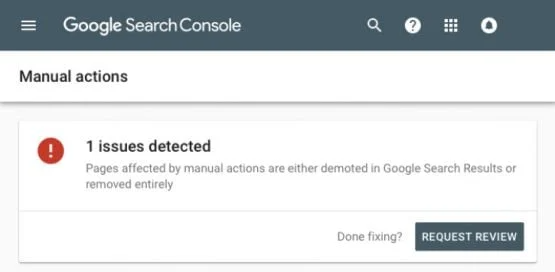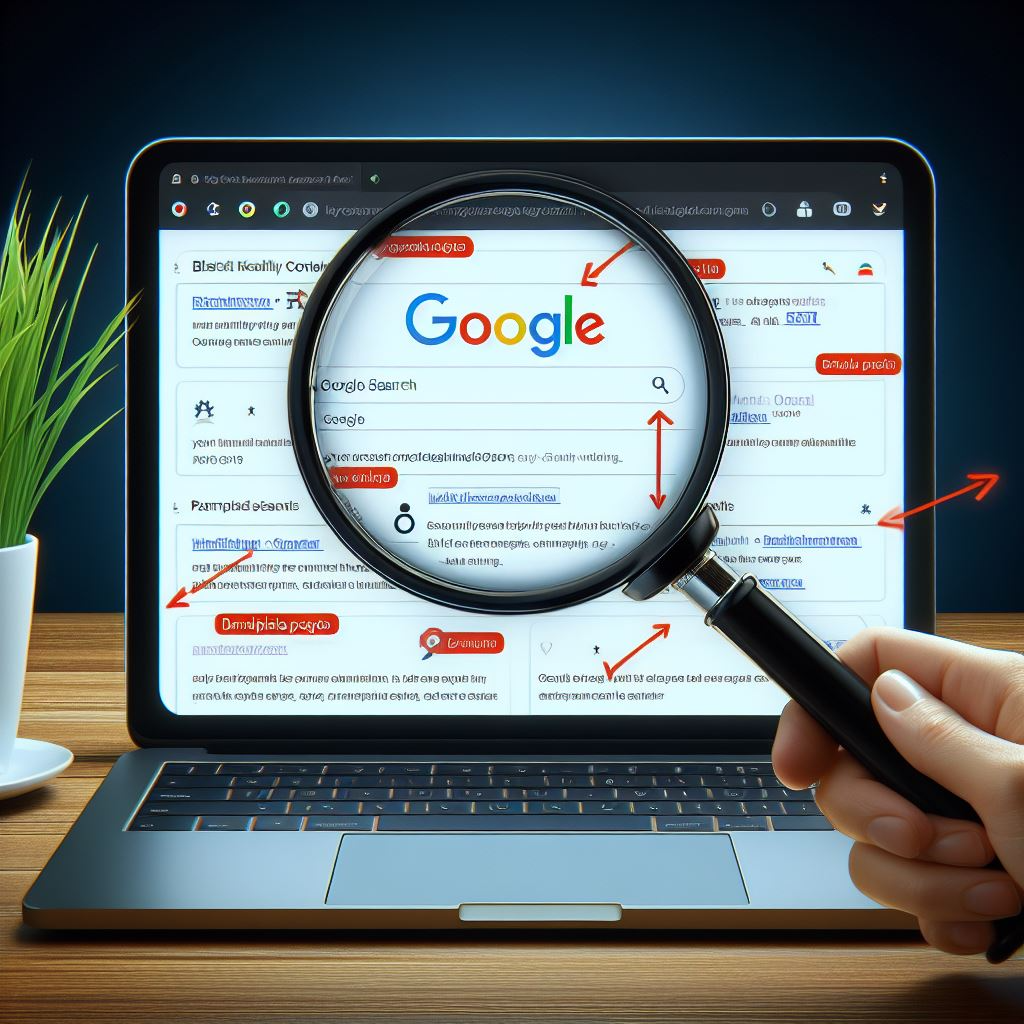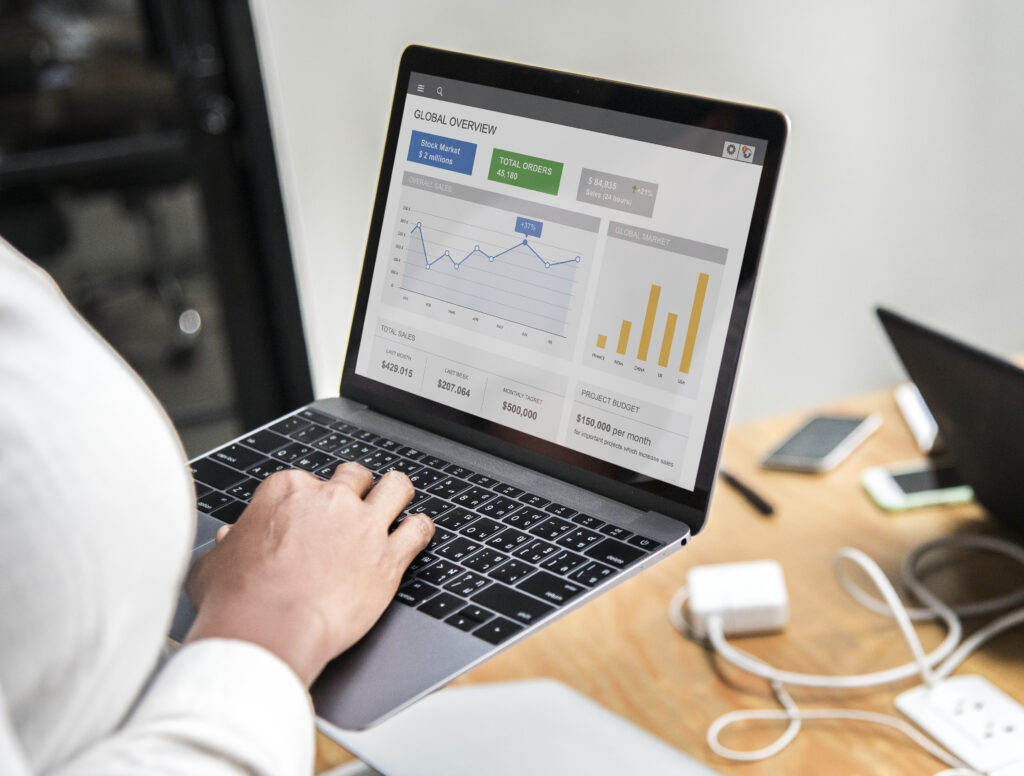Have you been putting in a lot of effort to improve your website’s visibility on Google? It can be quite challenging, right?
But imagine all your hard work going to waste because Google decides to give your site a penalty.
If you suddenly notice a drop in your website’s traffic or a decrease in its position on Google’s list of search results, you might be facing a problem.
But don’t worry! You can fix it.
Recovering from a Google penalty is like fixing a mistake. It’s important to do so because if your website isn’t visible on Google, you might lose customers and revenue.
In this blog, we’ll discuss how to address these Google penalties. We’ll keep it simple, so don’t stress. Let’s work together to fix your website!
What Is a Google Penalty?

A Google penalty happens when a website breaks Google’s rules. It’s like a consequence for doing something wrong. This can make the website show up lower in Google searches.
Reasons for penalties include having spammy content, Spammy links, or using too many keywords. When a site gets penalized, it loses traffic and might not get as many visitors.
To avoid Google penalties, it’s important to follow Google’s guidelines and keep the website clean and honest.
Fixing penalties involves finding the problem areas and making changes to meet Google’s rules again, so the website can regain its visibility.
Google penalties come in two main types: Manual and Algorithmic.
Google penalties come in two main types: Manual and Algorithmic.
- Manual Penalties: These are imposed manually by Google’s webspam team after reviewing a website’s violation of guidelines. Manual penalties are specific to individual websites and are often issued for severe violations. They require manual intervention from Google to lift the penalty, and webmasters usually receive a notification through Google Search Console detailing the reason for the penalty.
- Algorithmic Penalties: These are triggered automatically by Google’s algorithms when they detect patterns of behavior that violate Google’s guidelines. Algorithmic penalties are applied to a broader scope of websites and are usually the result of widespread issues like spammy link building or keyword stuffing. Unlike manual penalties, algorithmic penalties don’t typically come with a notification, making them sometimes harder to identify.
| Penalty Type | Description |
|---|---|
| Manual Penalty | Applied manually by Google’s webspam team. |
| Algorithmic Penalty | Automatically triggered by Google’s algorithms. |
| Content-related Penalty | Due to issues like spammy content or keyword stuffing. |
| Link-related Penalty | Caused by unnatural or low-quality backlinks. |
| User-generated Spam Penalty | Stemming from unmoderated spammy user-generated content. |
| Technical Penalty | Arising from technical violations such as cloaking. |
What happens when you get a Google penalty?
When you get a Google penalty, it’s like getting a warning for breaking the rules.
Google applies penalties when it finds that a website is not following its guidelines.
This can happen for various reasons, like having low-quality content, unnatural links, or using deceptive tactics to manipulate search rankings.
The consequences of a Google penalty can include:
- Drop in Search Rankings: Your website may show up lower in Google’s search results, making it harder for people to find you.
- Decrease in Traffic: With lower rankings, you may experience a decrease in the number of visitors coming to your site from search engines.
- Loss of Visibility: Your website may lose visibility online, affecting your brand’s reputation and credibility.
- Loss of Revenue: A drop in traffic and visibility can lead to a decrease in sales and revenue for your business.
Overall, getting a Google penalty can have significant repercussions for your website and business.
It’s essential to address the issues that led to the penalty promptly and work towards rectifying them to regain Google’s trust and improve your website’s performance.
What Are Common Causes of Google Penalties?
Common causes of Google penalties include:
- Spammy Content: Creating low-quality or irrelevant content stuffed with keywords to manipulate search rankings.
- Unnatural Links: Acquiring links from irrelevant or low-quality websites in an attempt to artificially improve search engine rankings.
- Keyword Stuffing: Overusing keywords unnaturally within content or meta tags, can make the content difficult to read and diminish user experience.
- Cloaking: Showing different content to search engines and users, violating Google’s guidelines on deceptive practices.
- Duplicate Content: Publishing identical or substantially similar content ( duplicate content ) across multiple pages or websites, leading to confusion and dilution of search relevance.
- User-generated Spam: Allowing users to create spammy content on your website, such as in comments or forums, without proper moderation.
Avoiding these practices and focusing on providing valuable, relevant content that adheres to Google’s guidelines can help prevent Google penalties.
How To Recover From A Google Penalty Step By Step?
Recovering from a Google penalty requires a systematic approach. Here’s a step-by-step guide:
Identify the Penalty:
First, figure out what went wrong. Look for signs that Google doesn’t like something on your site. Check if Google has sent you any messages or notifications about a penalty.

Use tools like Google Search Console to see if there are any problems reported. Look for changes in your website’s traffic or search rankings.
Try to understand what might have caused the penalty, like having spammy content or unnatural links. Identifying the penalty is the first step towards fixing it and getting your website back on track.
Understand the Problem:
Next, it’s important to know what’s causing the issue. Take time to understand why Google penalized your site. Look closely at your content, links, and website setup.

Check if you’re following Google’s rules. Maybe your content is low quality or your links seem unnatural. Understanding the problem helps you fix it correctly.
It’s like finding the root of a problem so you can solve it from the ground up. Once you know what’s wrong, you can take the right steps to make things right and improve your website’s standing with Google.
Audit Your Website:

Now, it’s time to check everything on your website. This is called an audit. Look at every part of your site, like the content, links, and how it’s built.
See if any problems might have caused the Google penalty. Make a list of all the things you need to fix. It’s like giving your website a check-up to find any issues.
The Site audit helps you understand exactly what needs to be done to get your site back on track. Once you know what needs fixing, you can start making changes to improve your site and make Google happy again.
Fix the Issues:
Now that you know what’s wrong with your website, it’s time to fix it. Go through your list of problems from the audit and start making changes.

This might mean rewriting content, removing bad links, or fixing technical issues. It’s like tidying up your website to make it better.
By addressing these issues, you’re showing Google that you’re serious about following the rules and providing a good experience for users.
Fixing the issues step by step will help you regain Google’s trust and improve your website’s chances of ranking well in search results again.
Request Reconsideration (if applicable)
If you’ve fixed the problems on your website, you can ask Google to take another look. This is called a reconsideration request.
Explain to Google what changes you’ve made to fix the issues. Be honest and clear about your efforts to improve your site. It’s like asking for a second chance.
Google will review your request and decide if your site can be forgiven. If they agree, your site’s penalty may be lifted, and you can start fresh.
Just remember to keep following Google’s rules to avoid getting penalized again in the future.
Monitor Progress:
Keep an eye on how your website is doing. Check if the changes you made are helping. Use tools like Google Analytics to see if your website traffic is going up.
Look at your search rankings to see if your website is showing up higher in Google. It’s like keeping track of how well you’re doing after making changes.
Monitoring progress helps you know if you’re on the right track or if you need to make more improvements. By watching closely, you can see if your website is getting better and closer to recovering from the Google penalty.
Continue Improving:
Don’t stop now! Keep making your website better. Create valuable content that people want to read. Build natural links from reputable websites.
By continuing to improve your website, you’ll attract more visitors and climb higher in Google’s rankings. Stay focused and keep working hard.
The more you invest in making your website the best it can be, the more success you’ll see in the long run.
How Soon Will My Site Recover From a Google Penalty?
Recovering from a Google penalty can take time, like healing a wound. The speed of recovery depends on different things.
First, it matters what kind of penalty you get. Some penalties are applied manually by people at Google, while others happen automatically because of Google’s rules.
Next, how quickly you fix the problem is important. The faster you make things right, the sooner your site can start getting better.
Also, how healthy your website is matters. Websites that already follow the rules and offer good stuff to people might bounce back faster.
The kind of business you’re in makes a difference too. If you’re in a competitive industry, it might take longer to recover.
Lastly, things outside your control, like changes in Google’s rules, can affect how fast your site bounces back.
Overall, there’s no exact timetable for recovery. But by working hard, following the rules, and being patient, you can help your site get back on track.
Conclusion:
In simple terms, a Google penalty means your website didn’t follow the rules. But it’s a chance to fix things up and do better.
Quickly making changes and sticking to Google’s rules is crucial. Fixing technical stuff and improving content quality are important too.
By working hard and paying attention to details, you can reduce the penalty’s effects and start recovering.
Keep improving your site and following Google’s guidelines to get back on track. Look at this as a chance to learn and grow, making your website stronger in the process.
With effort and patience, you’ll get through this and come out better on the other side.


Thanks man ! recovery your google account is hard to understand ! and this help me Regard : Telkom University
You’re welcome! Recovering your Google account can be confusing, but I’m glad I could help make it easier for you. If you have any more questions or need further assistance, feel free to ask.